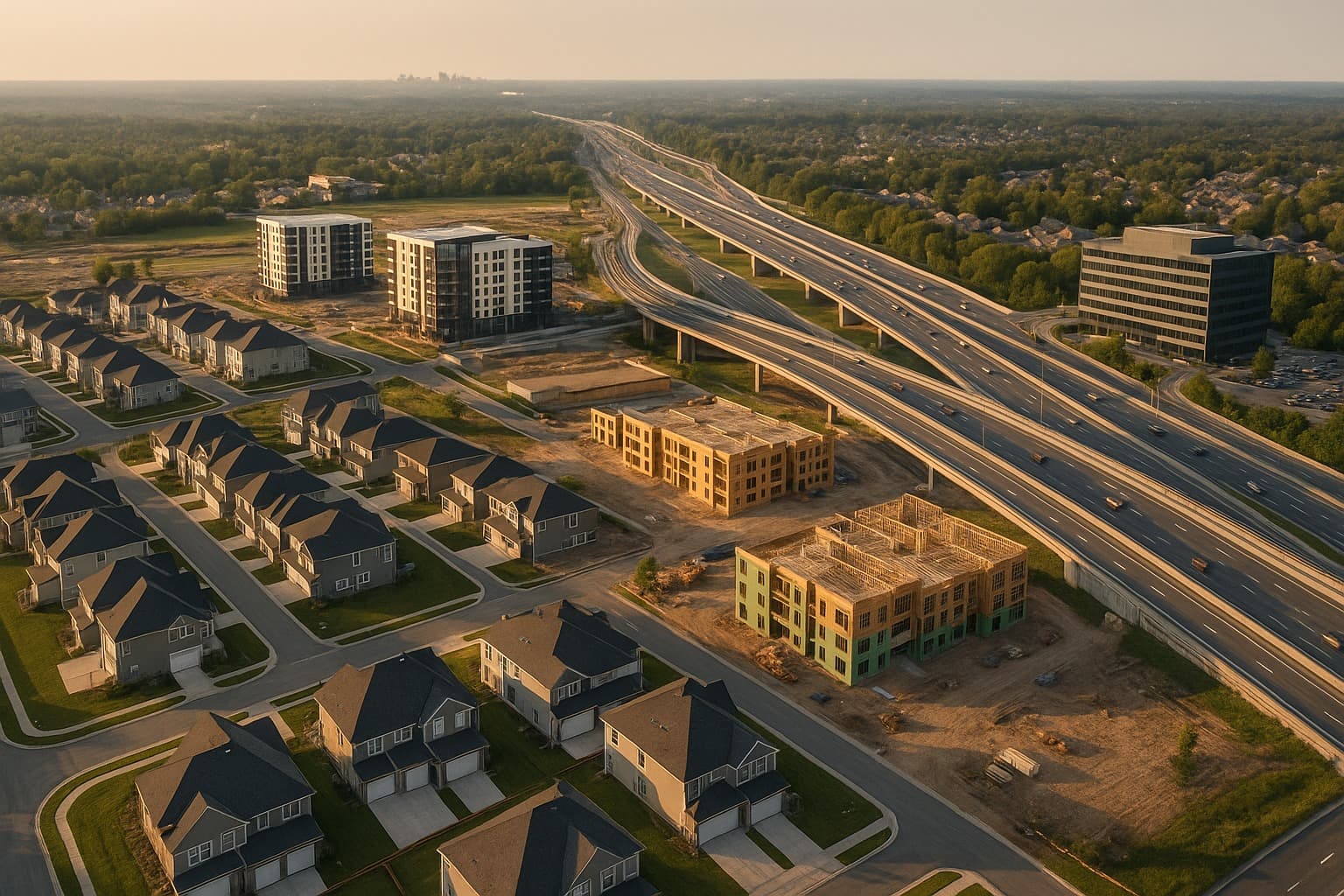The Rise of Suburbs: How Work-From-Home is Reshaping India's Housing Market
Summary
Work-from-home has fueled a surge in demand for suburban homes in India, offering larger spaces and improved lifestyles. Developers and investors are responding, reshaping the housing market around this new preference.

Impact of Work-from-Home on Suburbs
When the pandemic struck in 2020, few of us imagined how deeply it would reshape our lives. Offices shut down, streets emptied, and suddenly our dining tables doubled as workstations. What began as a temporary survival measure slowly became a cultural revolution—the rise of work-from-home in India. Years later, remote and hybrid work continue to thrive, and their influence is visible not only in corporate policies but also in India’s housing market.
One of the biggest shifts has been the demand for suburban homes. Once dismissed as “too far” or “inconvenient,” suburban neighborhoods are now in the spotlight. The impact of work-from-home on suburban real estate is undeniable—families are rethinking priorities, developers are redesigning projects, and investors are betting on suburbs as the future of urban living.
Why Work-from-Home Changed Housing Choices
For decades, India’s homebuyers believed location meant everything. Being close to office districts, metros, and highways was the top priority. But this came at a cost—tiny apartments, high rents, stressful commutes, and little open space. Families made peace with these compromises because offices demanded daily presence.
Then came the remote work lifestyle. Suddenly, the office commute became optional, and the concept of home expanded. Buyers started asking new questions:
Do we have an extra room that can function as an office? Is there a balcony or garden for fresh air during breaks? Can we afford a bigger home in a quieter neighborhood?
These questions unlocked opportunities in the suburbs. The WFH lifestyle driving housing demand in suburbs was not just about saving money but about improving quality of life.
The Suburban Dream
Cities like Mumbai, Delhi-NCR, Bangalore, and Pune witnessed a clear shift. In Navi Mumbai, Thane, Noida Extension, Whitefield, and Hinjewadi, sales of mid-segment and premium suburban homes picked up. Buyers realized they could swap a cramped 1BHK in the city center for a spacious 2BHK or 3BHK in the suburbs at nearly the same cost.

The housing demand shift from cities to suburbs in India is most visible among young families. They are choosing larger homes in gated townships that offer work-friendly features like high-speed internet, co-working lounges, and open green spaces for relaxation. Developers are responding with real estate trends from work-from-home culture such as flexible floor plans, home office corners, and community amenities tailored to remote workers.
Emotional Shift: From Chaos to Calm
The move to suburbs is not just financial—it is emotional. Many people describe a sense of relief after moving away from city chaos. Instead of waking up to traffic noise and pollution, families now enjoy the sound of birds, wider roads, and cleaner air.
Take the story of Ananya, a marketing professional in Bangalore. Before the pandemic, she spent nearly three hours daily commuting to her office. When remote work became permanent, she and her husband moved from a small flat in Koramangala to a spacious apartment in Whitefield. Now, she works from a sunlit balcony, takes evening walks in the community park, and spends more time with her daughter. For her, the impact of remote work lifestyle on suburban housing demand was personal—it brought peace of mind.
Why Work-from-Home is Boosting Suburban Property Demand
Several factors explain this shift: Affordability – Suburbs offer more square footage for the same price, making bigger homes accessible. Lifestyle Upgrade – Cleaner air, open spaces, and better amenities improve quality of life. Hybrid Work Balance – Even if employees visit offices once or twice a week, improved metro lines and expressways make commuting manageable. Future Growth – Government investments in infrastructure ensure suburban property values will rise over time.
This is why real estate demand is shifting to suburbs post-pandemic—because they promise both comfort today and appreciation tomorrow.
Developer and Investor Response
Developers are no longer building generic apartments. They’re tailoring projects for the remote work real estate market, with high-speed internet infrastructure, soundproof rooms, and even co-working hubs inside residential complexes. Township projects are particularly popular, offering schools, healthcare, shopping, and recreation within the community.
Investors, too, are catching on. Suburbs offer lower entry costs, higher potential appreciation, and growing rental demand. As more professionals and students look for affordable spaces, suburban property investment opportunities due to WFH are multiplying. In many ways, suburbs are no longer the backup plan—they are the main attraction.
Suburbs as Tomorrow’s Cities
What’s happening today is similar to how Gurgaon evolved in the early 2000s. Once seen as the outskirts of Delhi, Gurgaon transformed into a thriving IT and real estate hub. Now, suburbs like Panvel near Mumbai, Greater Noida near Delhi, and Hinjewadi near Pune are walking the same path.
The impact of work-from-home on suburban real estate is accelerating this transformation. With strong infrastructure projects—expressways, metro lines, airports—suburbs are not just bedroom communities but emerging economic centers. By 2030, many will rival core cities in terms of lifestyle and opportunities.
The Human Side of the Story

Behind every statistic is a human story. For young professionals, suburban homes mean the chance to own instead of rent. For families, it means more space for children to play. For retirees, it means peace and greenery away from city chaos.
This is why the suburban property growth due to remote work feels more permanent than temporary. It’s rooted in human aspiration—everyone wants a better home, a better lifestyle, and more time with loved ones. Work-from-home gave people the freedom to chase that dream.
Conclusion
The pandemic might have started it, but the trend is here to stay. The work-from-home lifestyle in India has forever altered how people view homes and cities. Suburbs, once considered too far, are now the heart of India’s housing demand story.
For buyers, they offer affordability, lifestyle, and space. For developers, they represent growth. For investors, they promise long-term returns. And for families, they symbolize a life where work and home finally coexist peacefully.
Suburbs are no longer the future of Indian real estate—they are its present. And as remote work continues, their importance will only grow stronger.
Summary (100 Words)
The rise of work-from-home in India has transformed housing demand, shifting focus from congested city centers to spacious suburban homes. Families now prefer affordability, larger living spaces, and community-driven lifestyles over cramped city apartments. Developers are responding with township projects designed for remote workers, while investors see growing suburban opportunities. With improved infrastructure and hybrid work flexibility, suburbs are no longer second choices—they are the new hotspots. The impact of work-from-home on suburban real estate reflects both financial and emotional priorities, making suburbs the future of Indian housing and a defining trend for the country’s property market.
